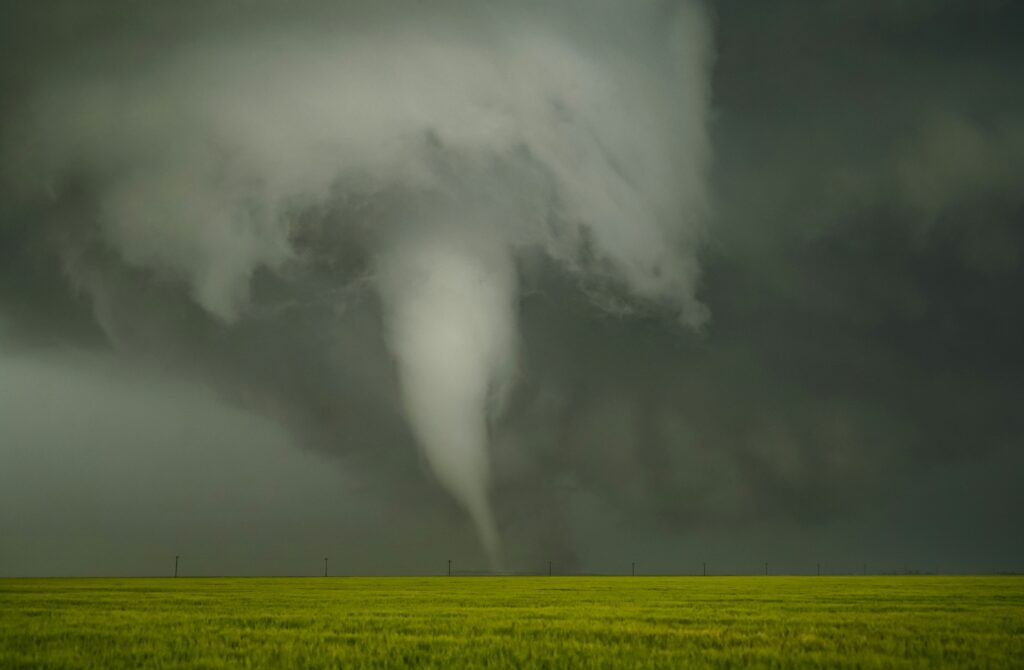
Tornado Alley: Shifting From the Great Plains to the Southern States
For decades, “Tornado Alley” has been synonymous with the Great Plains, a region stretching through Kansas, Oklahoma, and Texas that sees a high frequency of severe storms. However, recent studies highlight a notable shift in tornado activity. Reports suggest that the southeastern United States is experiencing more tornado outbreaks, leading to discussions about whether the traditional Tornado Alley is giving way to a new, more dangerous corridor in the South. Understanding the interplay of climate variability, anthropogenic influences, and regional geography is key to reconciling these changes.
The Decline of Tornado Days in the Great Plains
Research spanning over 60 years shows a significant decline in tornado days across the Great Plains, especially during the warm months of June, July, and August. According to findings from the recent study, Texas and other states in the Southern Great Plains have seen a sharp decrease in tornado activity during the warm season, characterized by “fewer days, fewer tornadoes.” This trend is attributed to changes in atmospheric dynamics, including a reduced frequency of the conditions necessary to form tornadoes, such as specific wind shear patterns and instability in the atmosphere.
The calendar day of peak tornado activity in this region has also shifted. Historically, the most active day fell around mid-June, but it now occurs earlier, in late May. This shortening of the warm-season tornado window is a key indication of how regional atmospheric changes are affecting tornado climatology.
The Rise of the Southeast: “Fewer Days, More Tornadoes”
While tornado activity decreases in the Great Plains, the southeastern U.S. is becoming an increasingly active hotspot. States like Alabama, Mississippi, and Georgia have experienced significant increases in tornado outbreak days, particularly during the cool season from November to February. In contrast to the Great Plains’ “fewer days, fewer tornadoes” phenomenon, the Southeast is seeing “fewer days, more tornadoes.” These outbreaks, often involving more than 30 tornadoes in a single day, are especially concerning due to the region’s high population density, lower preparedness levels, and the presence of vulnerable housing structures.
This rise in tornado outbreaks is likely linked to shifts in large-scale atmospheric patterns, including jet stream dynamics, warm Gulf of Mexico air, and a stronger temperature gradient in the cooler months. These factors combine to create an environment conducive to more clustered and intense tornado activity in the South.
Why Is Tornado Activity Shifting?
This regional shift in tornado activity is likely driven by a combination of climate variability, anthropogenic climate change, and natural cycles. Key factors include:
- Internal Climate Variability:
- Multi-decadal cycles, such as El Niño-Southern Oscillation (ENSO) and Atlantic Multidecadal Oscillation (AMO), influence atmospheric conditions like jet stream position and moisture availability. These cycles can modulate where tornado-supporting environments form.
- Anthropogenic Climate Change:
- Warming temperatures and changes in moisture availability may intensify severe thunderstorm environments, especially in regions with strong temperature gradients. This could explain the increased tornado activity in the Southeast.
- Population and Reporting Biases:
- Advances in storm detection technology and higher population density in the South may contribute to the perception of increased tornado activity in the region.
Implications of a Shifting Tornado Alley
The shift of tornado activity to the southeastern U.S. carries significant implications:
- Increased Vulnerability: The South has higher population densities and more vulnerable housing, such as mobile homes, which are less resilient to severe weather. Additionally, the region’s heavily forested terrain makes it harder to spot tornadoes, reducing lead time for warnings.
- Changing Preparedness Needs: Tornado preparedness efforts have historically focused on the Great Plains. The Southeast’s rise in tornado outbreaks calls for expanded education, infrastructure investments, and warning systems tailored to this region.
- Challenges for Forecasting: The shift complicates forecasting, as models must adapt to new patterns of tornado genesis and evolution. Predicting cool-season tornadoes, which now dominate in the Southeast, is inherently more challenging due to the subtle atmospheric signals involved.
Reconciling the Shift
While Tornado Alley in the Great Plains isn’t disappearing, the data clearly indicate a redistribution of tornado activity. The term “Dixie Alley” has gained traction to describe the Southeast’s increasing prominence, but this is more than just a new label. The patterns suggest that tornadoes are becoming more episodic and concentrated in outbreaks, shifting the burden of preparedness and mitigation to areas less accustomed to frequent severe storms.
This shift doesn’t mean the Great Plains will stop seeing tornadoes, but it does underscore the need for a broader national approach to tornado preparedness, one that considers the unique vulnerabilities and needs of both regions. Understanding and adapting to these changes will require continued research into the roles of climate change and variability in shaping severe weather trends.
Conclusion
The evolving nature of Tornado Alley reflects the dynamic interplay between climate, geography, and human factors. As the Great Plains sees fewer tornado days, the Southeast faces the challenge of more frequent and intense outbreaks. Preparing for this shift requires a proactive approach, combining advancements in forecasting, public education, and resilient infrastructure to protect lives and property in the face of changing tornado dynamics.